The beauty of nature is undeniable, and it can be made even more stunning with the addition of a few carefully selected plants. When selecting plants for outdoor spaces, drought tolerant plants are becoming increasingly popular due to the unpredictability of weather patterns and water shortages in many areas. For those looking for striking colors, yellow flowers are a great choice for adding cheer and vibrancy to any landscape.
If you’re looking for a way to brighten your garden with yellow flowers but need more luck in the water department, drought tolerant plants are your best bet. In this article, we’ll discuss the different kinds of drought tolerant plants with yellow flowers, their benefits, and how to create the perfect garden with them.
Blanket flower (Gaillardia sp.)
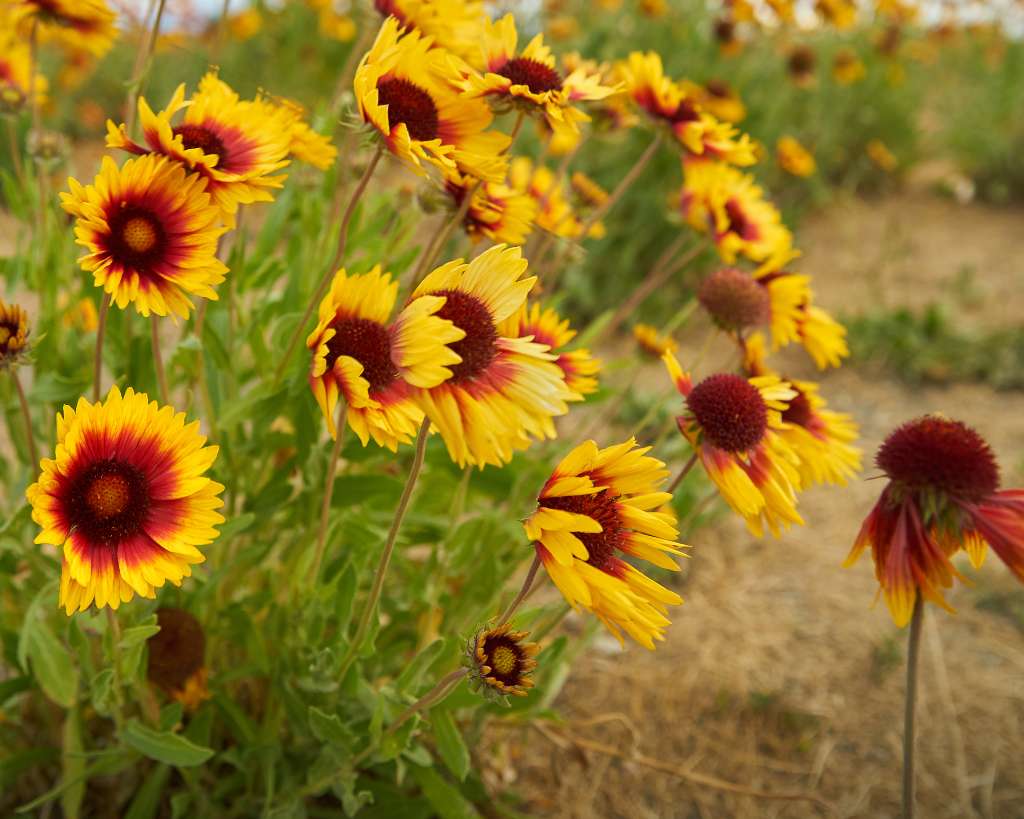
The blanket flower is a beautiful and vibrant plant that belongs to the sunflower (Asteraceae) family. It is known for its stunning daisy-like flowers with bright red, orange, and yellow petals. The flowers appear in mid-summer and bloom through fall. The flower heads are typically two to three inches wide, making excellent cut flowers for arrangements or bouquets.
Gaillardia can be planted in various garden landscapes such as cottage gardens, rock gardens, or meadow gardens. You can plant some of its compact varieties, such as Goblin, Arizona Sun, Mesa Yellow, and Fanfare Blaze at the front of borders.
You can also plant them with other drought tolerant perennials with gray-green foliage, such as lamb’s ear and dusty miller. It can also be planted with similar daisy-like flowering plants such as purple coneflower, catmint, and coreopsis.
Planting blanket flowers in groups of three or more will create a colorful display of blooms that attract pollinators like bees and butterflies to your garden.
Coreopsis (Coreopsis sp.)
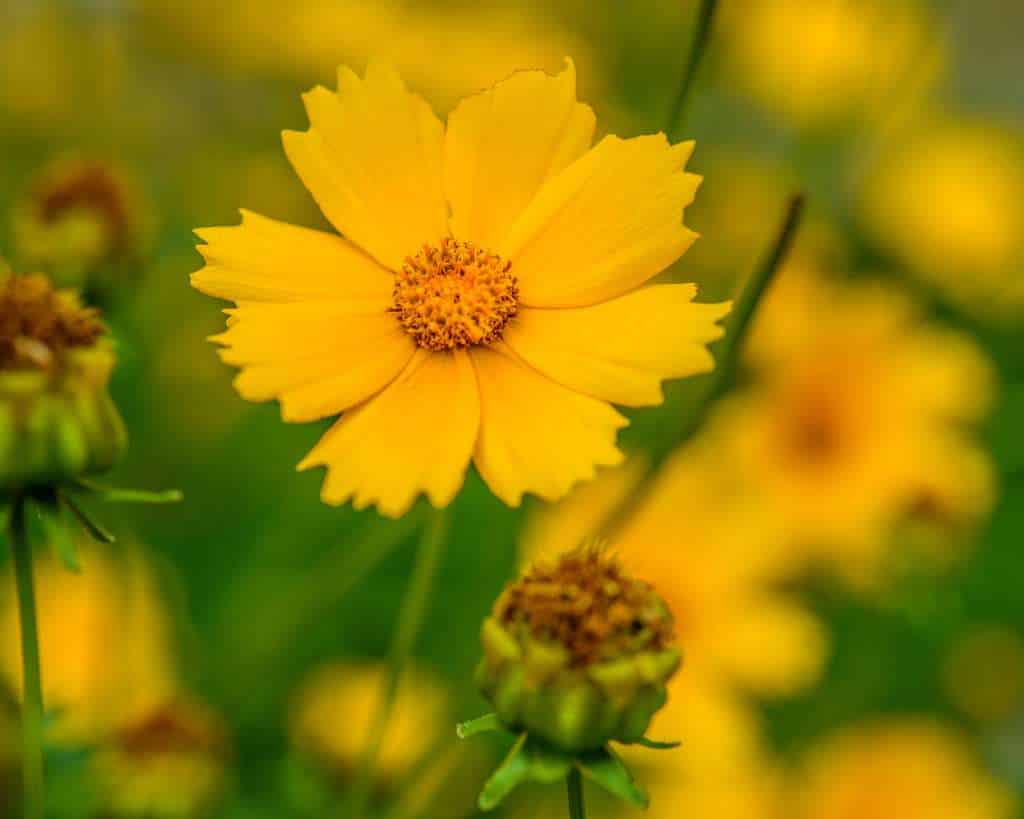
Coreopsis, commonly known as tickseed, is a native perennial flowering plant that belongs to the sunflower (Asteraceae) family. It is a beautiful perennial herbaceous plant growing up to 3 feet tall. The most striking feature of coreopsis is its beautiful yellow flowers that bloom all summer. These daisy-like flowers are typically two inches wide and sit atop thin stems that sway gracefully in the breeze.
Coreopsis is an ideal addition to any garden landscape, especially for those who desire drought-tolerant plants with yellow flowers. This plant thrives in full sunlight but can tolerate partial shade in hotter areas. It thrives in poor soil and does not need frequent watering once established, making it an excellent choice for low-maintenance gardens or xeriscapes.
Tickseed boasts dozens of varieties with different appearances. Some of its widely popular varieties that you can choose from are Early Sunrise, Golden Showers, Sunray, and Zagreb.
Coreopsis pairs well with purple Salvia and blue Veronica, creating a complementary color scheme. Yarrow, on the other hand, comes in various colors, including yellow and white, making it a versatile option to combine with these plants. Combine it with verbena to have beautiful flowers all season long.
Yarrow (Achillea sp.)
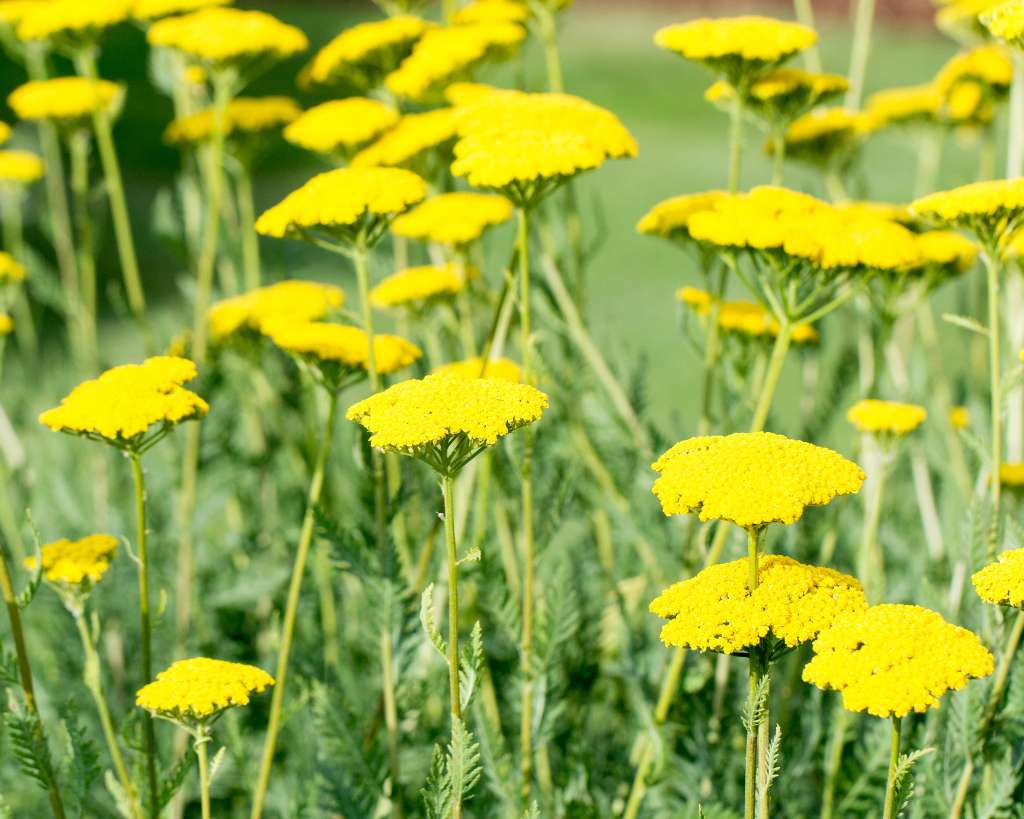
Yarrow is a versatile and attractive herbaceous perennial that can add vivid color to any garden. This plant produces clusters of tiny yellow flowers that bloom from June through August, making it an excellent choice for gardens needing vibrant summer hues. Yarrow is also known for its drought-resistant properties, making it one of the most sought-after drought-tolerant plants.
If you want to create an eye-catching garden landscape with minimal effort, yarrow may be just what you need. Its low maintenance requirements make it ideal for busy homeowners who want to enjoy beautiful blooms without spending hours pruning and watering their gardens. Yarrow’s hardy nature also makes it resistant to pests and disease, reducing the required care.
You can pair yarrow with other low-maintenance and drought-resistant plants like lavender or sage. These plants share similar growing conditions and complement each other visually with their soft hues of blue and purple flowers against the bright golden flowers of yarrow.
Another option is to incorporate succulents alongside the yellow yarrow. Both types of plants are well-suited for arid climates, making them perfect choices for water-wise landscaping.
Moonshine, Gold Plate, Terracotta, Coronation Gold, and Anthea are some of the popular varieties of yarrow that produce beautiful yellow flowers.
California poppy (Eschscholzia California)

California poppy is an annual or perennial plant that has captured the hearts of gardeners worldwide. This plant is highly sought after for its stunning yellow flowers that bloom in abundance during the spring and summer months. It is also perfect for those who live in drought-prone areas as it’s a drought-tolerant plant.
One feature that makes California poppy so popular amongst gardeners is how easy they are to care for. They thrive in full sunlight and well-draining soil types but can easily adapt to various environments. They grow best when planted in large groups or borders where their bright yellow color can be seen from a distance. Its fragrant yellow flowers are loved by bees and butterflies.
California poppies are great additions to any gardening landscape due to their versatility. California poppy combines well with native grasses such as blue grama or buffalo grass. These grasses have deep roots that allow them to withstand extended periods of drought. Other suitable plants include penstemons, yarrows, and lupines, which thrive well in dry soil conditions.
Buttercream, Thai Silk, Golden West, Apricot Chiffon, and Golden Poppy are the ideal varieties of California poppy that will add a beautiful splash of yellow to your garden while conserving water.
Yellow Blackfoot daisy (Melampodium leucanthum)
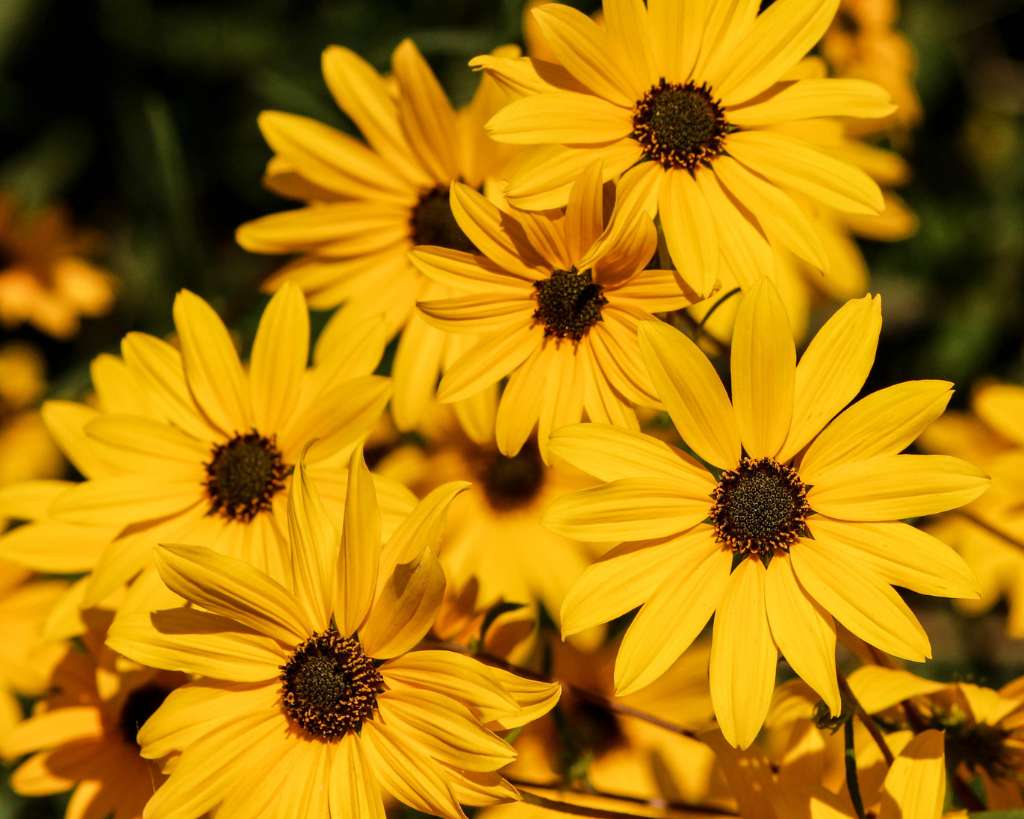
The Yellow Blackfoot Daisy is a stunning plant that can add color to any garden. In addition to its attractive yellow flowers, this drought-tolerant perennial requires minimal maintenance and is capable of growing in a variety of soil types. The beautiful plant adds a touch of cheerfulness to your landscape, and it thrives in the summer heat.
With so many drought tolerant plants with yellow flowers to choose from, yellow blackfoot daisy is considered to be one of the easiest one to maintain. The plant prefers well-drained soil and plenty of sunlight exposure, and it does not need regular watering. Additionally, it is a low-growing perennial that grows up to 12 inches tall and spreads quickly.
The Yellow Blackfoot Daisy’s bright yellow flowers are sure to catch the eye of anyone passing by your garden. To make your garden look more appealing, you can combine Blackfoot Daisy with ornamental grasses like Blue Gamma Grass or Purple Fountain Grass, which offer graceful movement and structure to your garden design.
Lemon Delight, Gold Medallion, and Prairie Sun are some of the prominent blackfoot daisy flowers planted by gardeners for their precious yellow blooms.
Goldenrod (Solidago sp.)

Goldenrod is a beautiful drought-tolerant plant that sports clusters of bright yellow flowers. This perennial herbaceous plant typically blooms from late summer to early fall, and its vibrant color can add a cheerful touch to any garden landscape. With over 100 species of goldenrod available, finding one that suits your gardening needs is easy.
When it comes to planting goldenrod, the options are endless. You have to make sure that it gets full sunlight and well-draining soil for optimal growth. It’s perfect for adding pops of color to rock gardens and makes an excellent border plant. Goldenrod is also deer-resistant, making it ideal for gardens in areas with high wildlife activity.
Goldenrod can be planted as a heat-tolerant companion with plants that produce colorful flowers, such as sage, lavender, and yarrow. These plants feature unique colors and textures that can complement the golden tones of the goldenrod.
Another way to incorporate goldenrod into a landscape theme garden is by planting it alongside ornamental grasses such as blue fescue or feather reed grass.
Some useful goldenrod varieties you can plant easily in your garden are Fireworks, Golden Baby, Wichita Mountains, and Golden Fleece.
Desert marigold (Baileya multiradiata)

Desert marigold is a beautiful and drought tolerant plant that can add a burst of sunshine to any garden landscape. This plant belongs to the aster family and is native to the southwestern United States and northern Mexico. Its yellow flowers are the main attraction, with petals surrounding a central disk. These flowers bloom in profusion from spring through fall, attracting pollinators such as bees and butterflies.
One of the best things about desert marigolds is their ability to thrive in hot, dry conditions. It is an excellent choice for those who want to create a low-maintenance garden or landscape that requires little watering or maintenance. Additionally, this plant can be planted alongside other drought-tolerant plants with yellow flowers like sunflowers, black-eyed Susans, or coreopsis.
Sundrops (Calylophus sp.)

Sundrops are one of the most attractive plants with bright yellow flowers that can light up any garden. They belong to the family Onagraceae and are native to North America. Sundrops bloom in late spring or early summer, producing a profusion of vivid yellow flowers that attract bees, butterflies, and other beneficial insects.
One of the best things about Sundrops is their adaptability to different soils and weather conditions. Plant them at a spot that receives ample amount of sunlight. They require minimal care once established and are resistant to pests and diseases.
Sundrops’ striking yellow blooms can be considered as one of the prettiest drought tolerant plants with yellow flowers that you can add to your landscape. Mexican feather grass, blue fescue, and red yucca can be planted together with sundrops.
Prairie Lode, Sunshine, Texas Primrose, and Yellow Sundrops are well-known drought-resistant varieties of Sundrops.
Helenium (Helenium sp.)
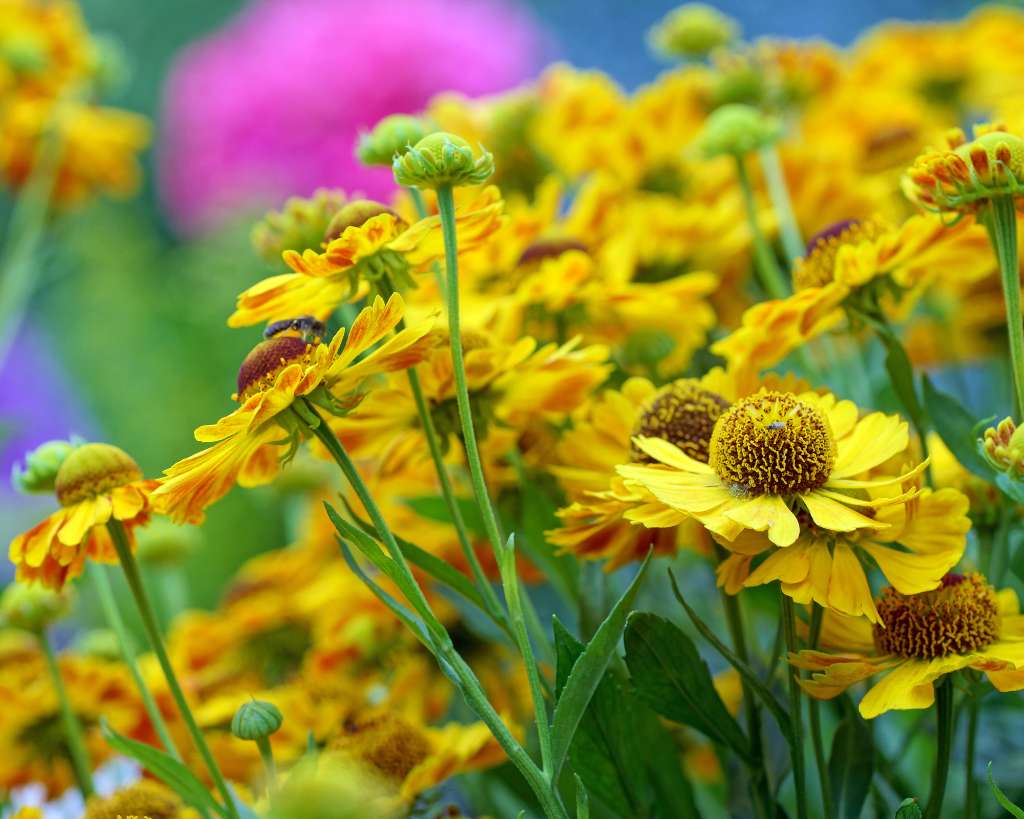
Helenium, also known as sneezeweed, is a beautiful and hardy perennial plant that belongs to the Asteraceae family. This plant is highly appreciated for its bright yellow or orange flowers that bloom profusely in summer and fall. The flowers look identical to daisies and are typically 1-2 inches wide. They grow on tall stems that can reach up to 4 feet in height.
Helenium is an excellent choice for gardeners who are looking for drought-tolerant plants with yellow flowers. This plant thrives in well-drained soil and full sun exposure, although it can tolerate partial shade too. It is ideal for gardens in hot and dry regions where water conservation is important.
When planting helenium, choose a spot with proper drainage, as this plant does not like wet feet. The appearance of helenium resembles other drought-resistant flowers such as coneflowers and black-eyed Susan.
You can combine helenium with plants with lovely silver-gray foliage, such as Russian sage and Lamb’s Ear. If you’re looking for a ground cover that pairs well with yellow helenium, consider using creeping phlox or sedum, as they are both low-maintenance and can withstand drought-like conditions.
Helenium varieties like Helena Gold, Salsa, Tiny Dancer, Butterfat, and Mardi Gras are some ideal plants you can select for your garden.
Yellow Coneflower (Echinacea sp.)
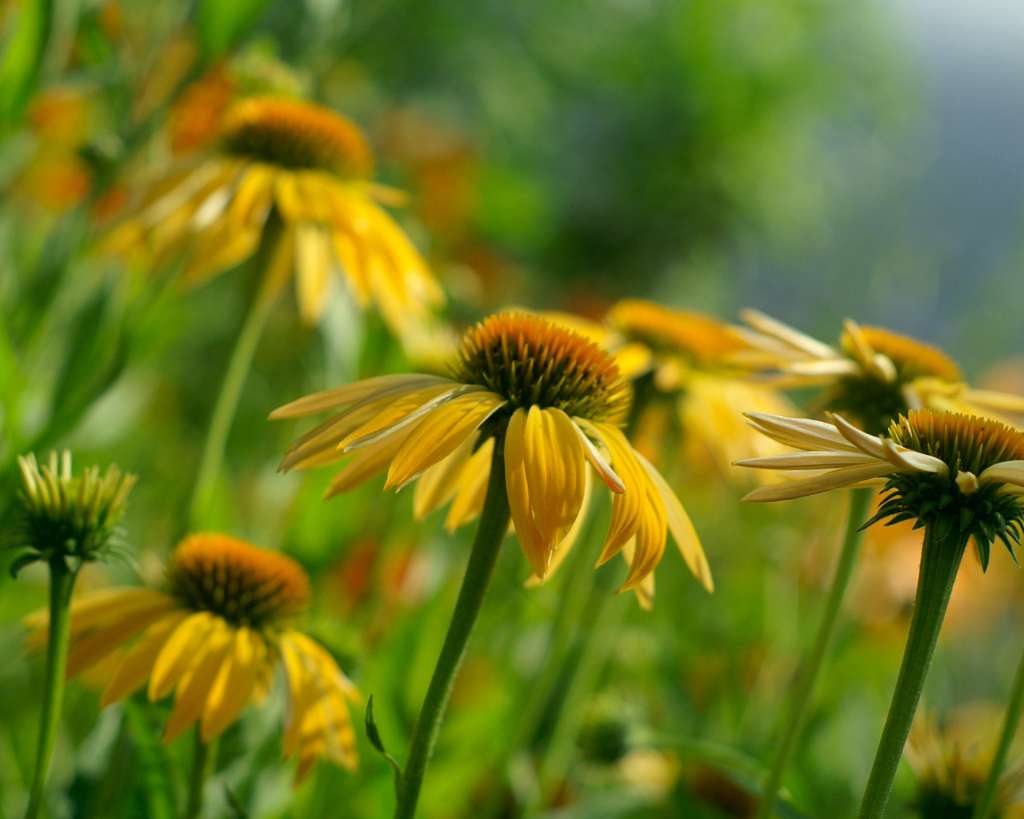
Yellow Coneflower is an attractive drought-resistant flower native to Missouri and Arkansas. If you want your garden to have yellow blooms all summer long, then planting yellow coneflower would be the best addition to your landscape. It is part of the famous purple coneflower family and the only one in the genus that doesn’t produce purple blooms.
The Yellow Coneflower is an incredibly cold hardy plant that can withstand harsh conditions such as drought and heat. Its flowers bloom from late spring to early fall. This makes it an ideal choice for those looking for low-maintenance plants requiring little care. Its sturdy, long stems can grow up to four feet tall, while its bright yellow flowers attract bees and butterflies to your garden, adding color and vitality to your outdoor space.
You can mix yellow coneflowers with other brilliant yellow flowering plants like coreopsis, goldenrod, and sundrops. This will create a cheerful and sunny garden theme. Ornamental grasses like blue grama or little bluestem can provide a beautiful backdrop for yellow coneflowers.
You can also choose from its different cultivars, such as Harvest Moon, Yellow My Darling, and Solar Flare, to start a fine yellow colored themed garden.
Four-nerve daisy (Tetraneuris scaposa)

Four-nerve daisy is another heat-tolerant plant from the sunflower family in our list that produces cute yellow flowers. The blooms appear in late spring or summer and can last up to several weeks.
One of the best things about Four-nerve daisy is that it thrives in hot and dry conditions. Therefore, it’s perfect for gardeners who live in areas with limited rainfall or where water conservation is essential. It can be planted in full sun or partial shade, making it a versatile addition to any garden design. Gardeners can also enjoy the lovely fragrance this species produces while planting it.
It can pair well with Mexican feather grass, giving your garden a delicate, airy appearance. Another perfect match for the Four-nerve daisy is the globe mallow plant.
Prairie zinnia (Zinnia grandiflora)
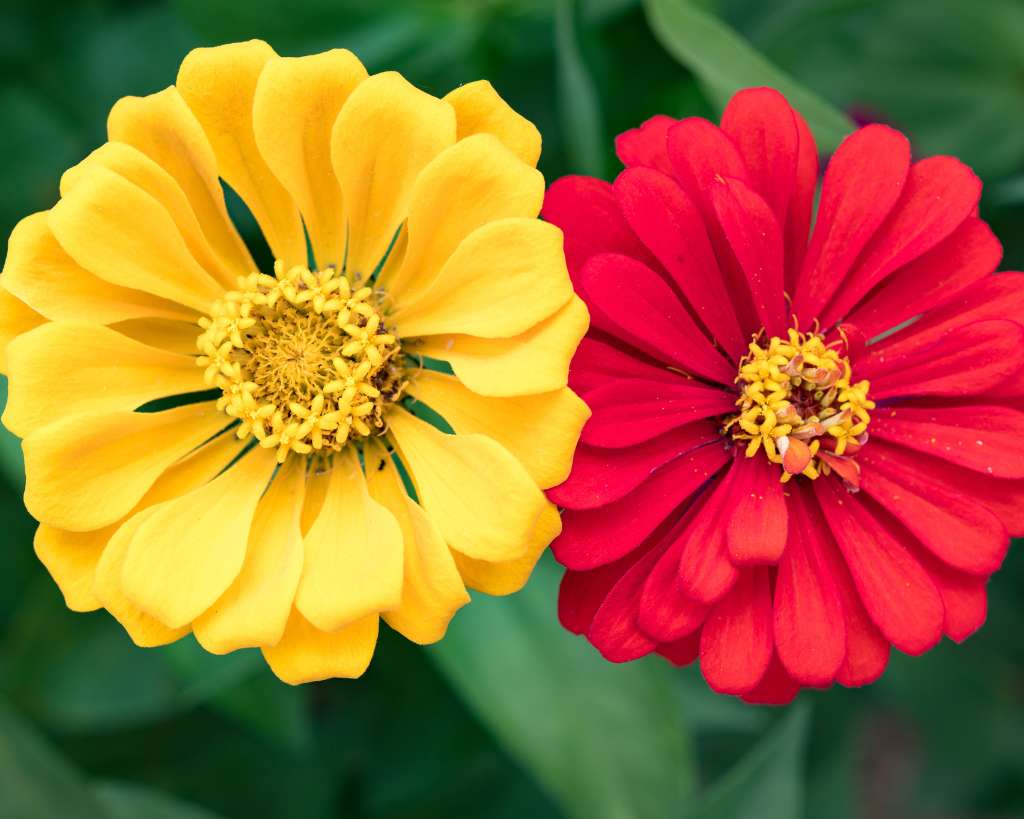
Prairie zinnia, also known as orange zinnia, is a drought tolerant plant that can add a splash of sunshine to any garden. This hardy perennial produces showy yellow flowers on tall stems, making it a great choice for adding height and color to your landscaping. These big, bright blooms are perfect for attracting bees and butterflies to your garden, creating a natural oasis for these important pollinators.
One of the best things about prairie zinnia is its ability to thrive in dry conditions. With its deep roots and low watering needs, this plant is ideal for those who live in areas with limited rainfall or frequently experience droughts.
With its vibrant colors and easy-to-grow nature, the Prairie zinnia is an excellent choice to combine with other waterwise plants. To partner with Prairie zinnia, combine it with Apache plume, a similar drought-resistant plant with complementary white flowers.
Another possibility is using black-foot daisy; this perennial herb has daisy-like blooms that complement Prairie zinnias and adds texture and variety to any landscape design.
Gold on Blue, Prairie Sunshine, White Star, and Nutmeg are great Prairie zinnia varieties you can choose from.
Mexican hat (Ratibida columnifera)
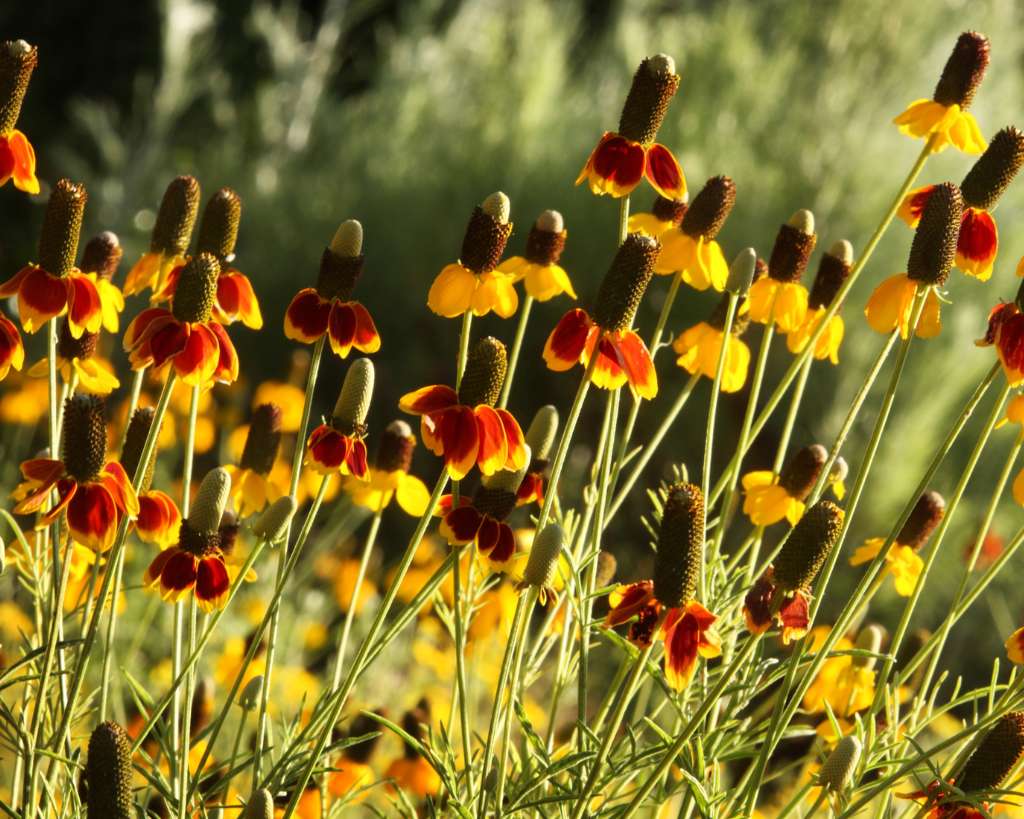
Mexican hat is a drought-tolerant plant that adds vibrant yellow flowers to any gardening landscape. This hardy perennial is native to the prairies of North America and is often found growing wild in fields, meadows, and along roadsides. The unique shape of its blooms resembles a sombrero or Mexican hat, hence its name.
Mexican hat thrives in hot and dry conditions, making it an excellent choice for gardeners who live in areas with limited rainfall or harsh summers. Its long taproots help the plant survive extended periods without water by drawing moisture from deeper soil layers. With proper care, Mexican hats can grow up to three feet tall and spread over two feet wide.
Planting Mexican hats in your garden is easy as it requires little maintenance once established. It prefers well-draining soil and full sun but can tolerate some shade during the hottest part of the day.
For companion planting with a Mexican hat, you can pair them with purple coneflower, whose purple-colored blooms contrast beautifully with Mexican hat’s yellow petals. To provide more texture to your garden, mix it with prairie dropseed.
You can choose Pulcherrima, Red Midget, Acoma, and Vanilla Spice.
Threadleaf coreopsis
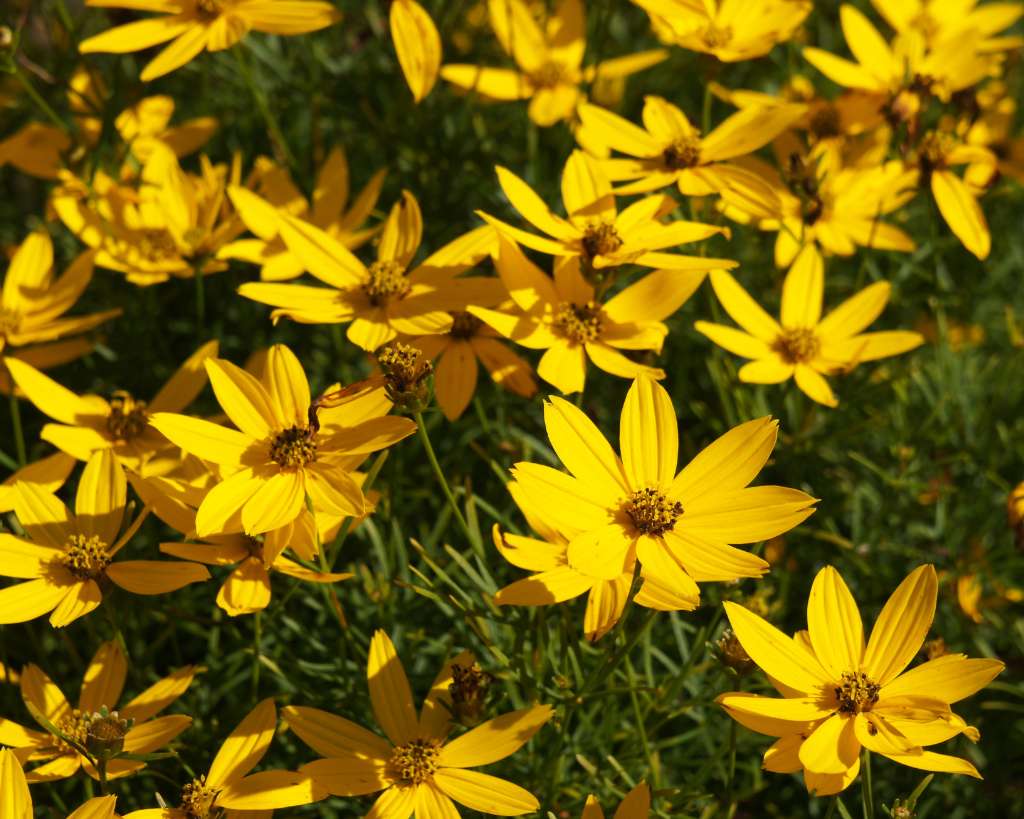
Threadleaf coreopsis is a beautiful and popular plant that boasts bright yellow flowers. Its vibrancy and drought tolerance makes it a good choice to add to your landscape.
This hardy plant can withstand hot, dry climates making it an excellent addition for those living in areas with limited rainfall or water restrictions. Additionally, Threadleaf coreopsis requires minimal maintenance once established, making it perfect for gardeners who want stunning blooms without the hassle of constant upkeep.
When planting Threadleaf coreopsis, selecting a location that receives full sun exposure is important. The soil should be well-draining as this plant does not tolerate soggy soil conditions. Once planted, regular watering during establishment will be necessary before transitioning into a low-watering routine.
You can combine it with pink evening primrose whose pink colored flowers would complement the yellow blooms of threadleaf coreopsis really well.
Yellow bells (Tecoma stans)
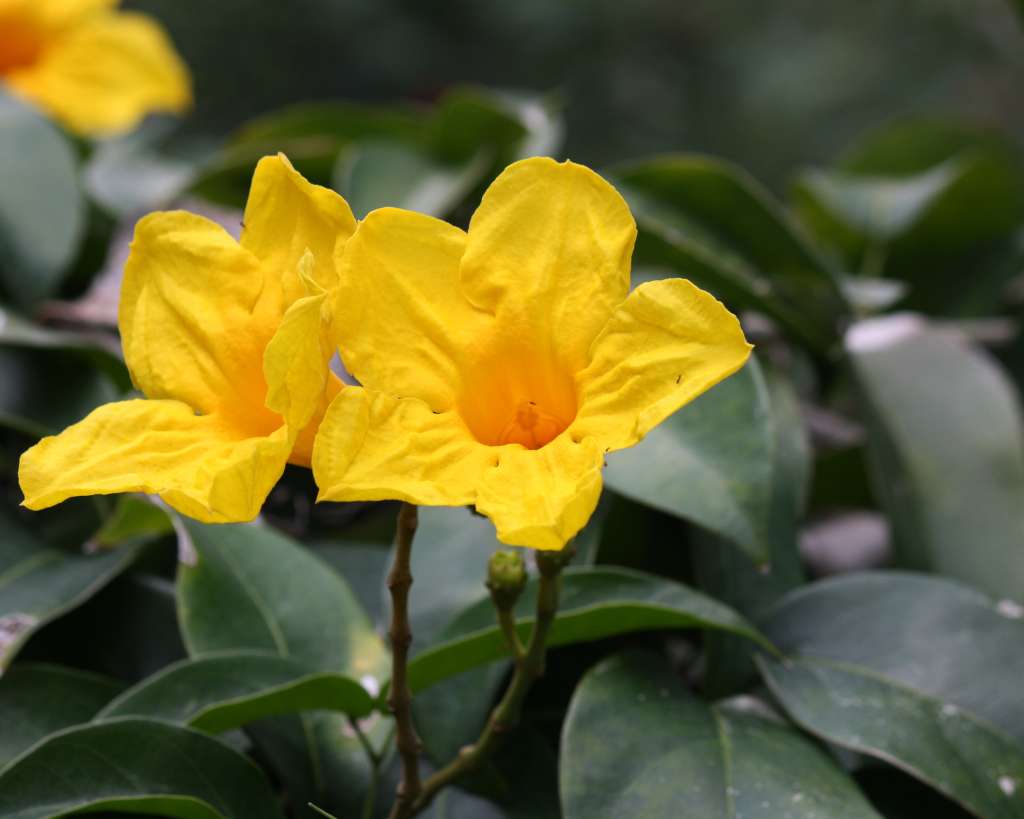
Yellow Bells, also known as Tecoma stans, is a beautiful flowering shrub perfect for adding color to any garden landscape. This drought-tolerant plant features stunning yellow flowers that bloom from spring until fall. The blooms are trumpet-shaped and can grow up to three inches long, making them a show-stopper in any garden.
Yellow Bells can be planted in various ways within your garden landscape. They work great as an accent plant or as part of a mixed-border display. These plants thrive in full sun exposure and prefer well-draining soil conditions. Yellow Bells can also be pruned into different shapes and sizes, making them an excellent choice for those who enjoy topiary gardening.
One of the best things about Yellow Bells is that it is easy to grow. It is deer resistant, and pollinators love it. Combine it with drought-tolerant perennials with gray green foliage such as lamb’s ear and dusty miller to create a beautiful textural garden.
10 More Drought Tolerant Plants With Yellow Flowers
Here is a bonus list of 10 drought tolerant plants with yellow flowers that you can choose from:
- Yellow Ice Plant (Delosperma dyeri)
- African Daisy (Osteospermum spp.)
- Yellow Evening Primrose (Oenothera hookeri)
- California Fuchsia (Epilobium canum)
- Black-eyed Susan (Rudbeckia hirta)
- Mexican Sunflower (Tithonia diversifolia)
- Creeping Jenny (Lysimachia nummularia)
- Yellow Leadwort (Amorpha fruticosa)
- Globe Mallow (Sphaeralcea ambigua)
- Golden Barrel Cactus (Echinocactus grusoni)
FAQs
What is the most drought resistant yellow flower?
the most resilient is the Coreopsis grandiflora, commonly known as the “Large-flowered Tickseed”.
What is the best yellow flower in full sun?
One of the best options is the Helianthus annuus, commonly known as the “Sunflower.”




